Inclu.city mitigates the housing crisis by modelling urban dynamics based on the principles of diversity, equitability, and affordability to ensure inclusivity in twenty-first-century cities through a digital urban design platform.

Introduction
Urbanization has been one of the most significant driving forces of recent global development. When handled properly, urbanization has the potential to create opportunities for a better life, provide a pathway out of poverty and act as an engine of economic growth. But while urbanization is moving the global economy forward, rising inequality and exclusion within cities can derail development progress. Despite wide recognition and commitment, building inclusive cities remains a challenge.
To make sure that tomorrow’s cities provide opportunities and better living conditions for all, it is essential to understand that the concept of inclusive cities involves a complex web of multiple spatial, social and economic factors. These factors are tightly intertwined and tend to reinforce each other. On a negative path, these factors interact to trap people into poverty and marginalization. Working in the opposite direction, they can lift people out of exclusion and improve lives.
Methodology
This sets the aim for the thesis, which is to combine spatial approaches such as access to land, infrastructure, and housing, with social interventions of inclusion of the marginalized & community-driven development. Access to adequate & affordable housing is a precondition for access to employment, education, health, and social services. To achieve this goal, the city of Barcelona requires some 50,000 protected dwellings to be created by 2025. To do this, we need to organize the city into smaller zones of differentiated densities, driven by infrastructure capacity and demand. This allows us to intervene by expanding the affordable housing stock through re-densification. Urban neighbourhoods need “Goldilocks” density—not too high or low, but just right. And what is just right changes over time and varies by neighbourhood. For this, a digital urban design platform is created to facilitate the planning of interventions based on real-time indicators. The inclu.city tool interacts with various stakeholders including the local communities to harness communities’ potential as drivers of inclusion.
This approach is analyzed by developing measures of inclusion that are context appropriate for the city of Barcelona.
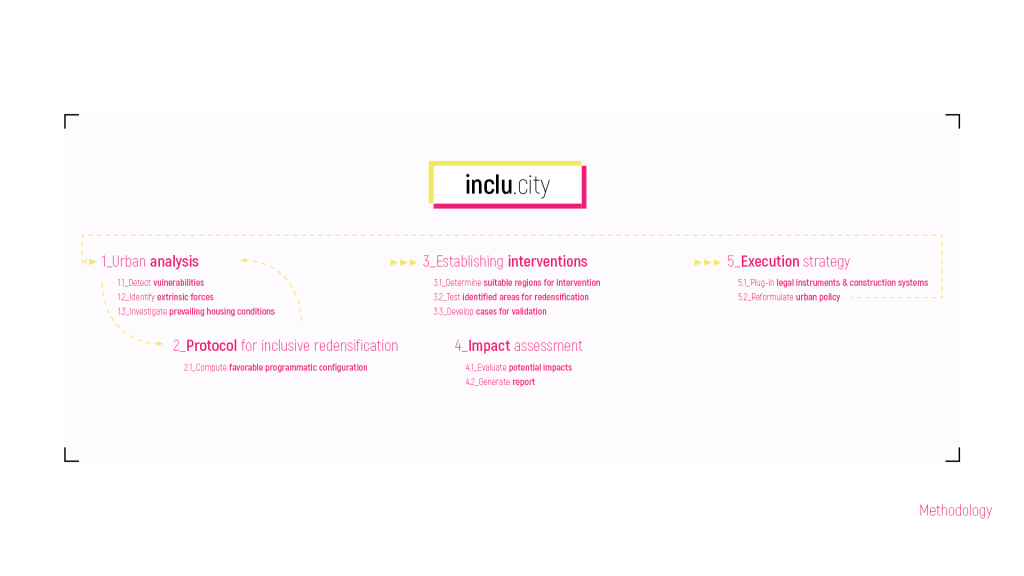
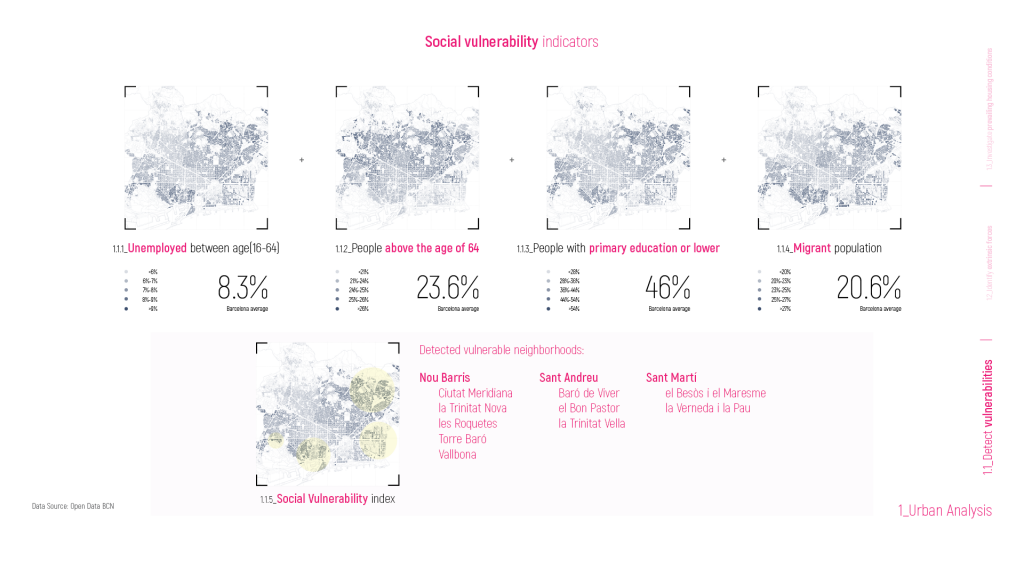
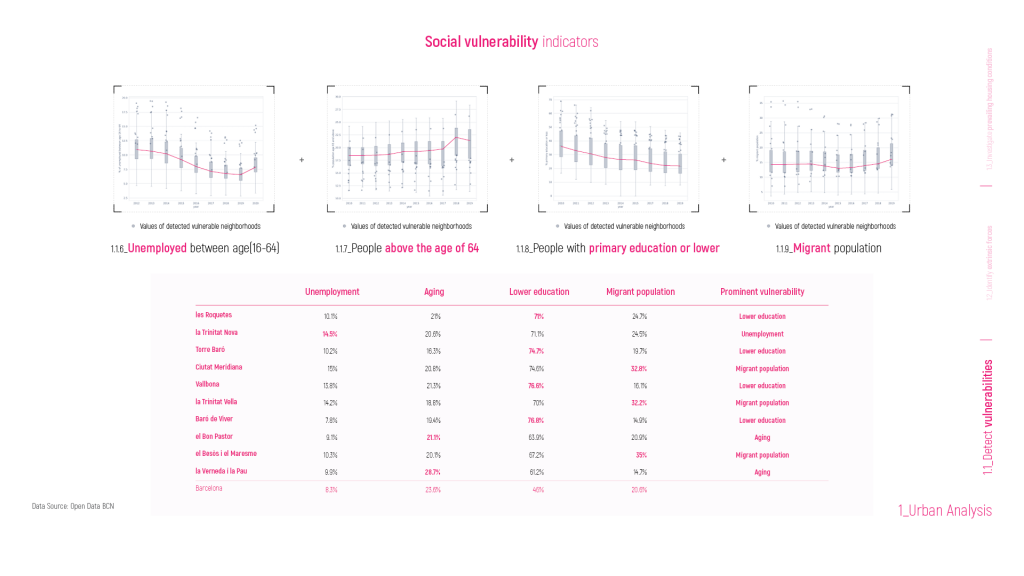
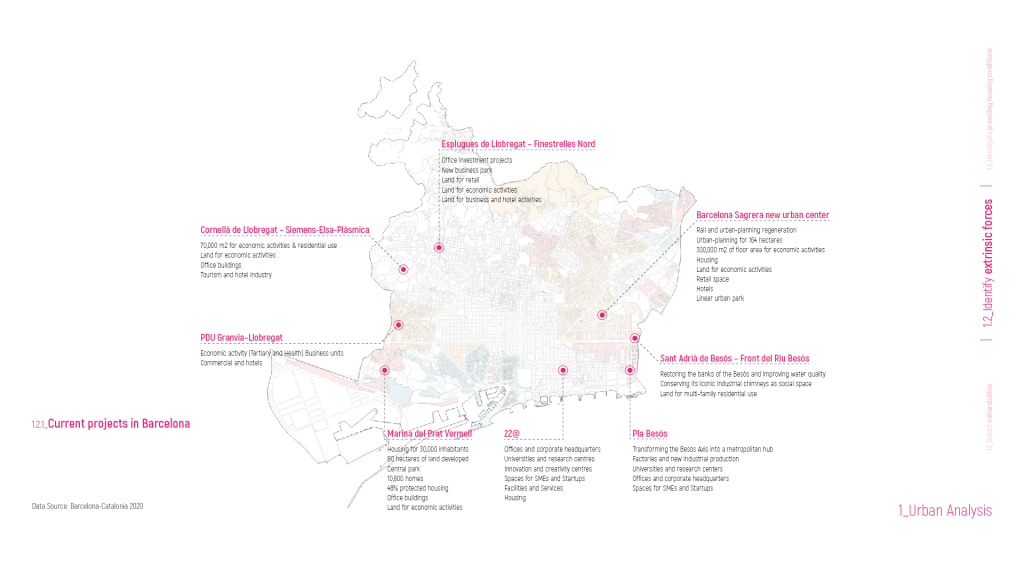
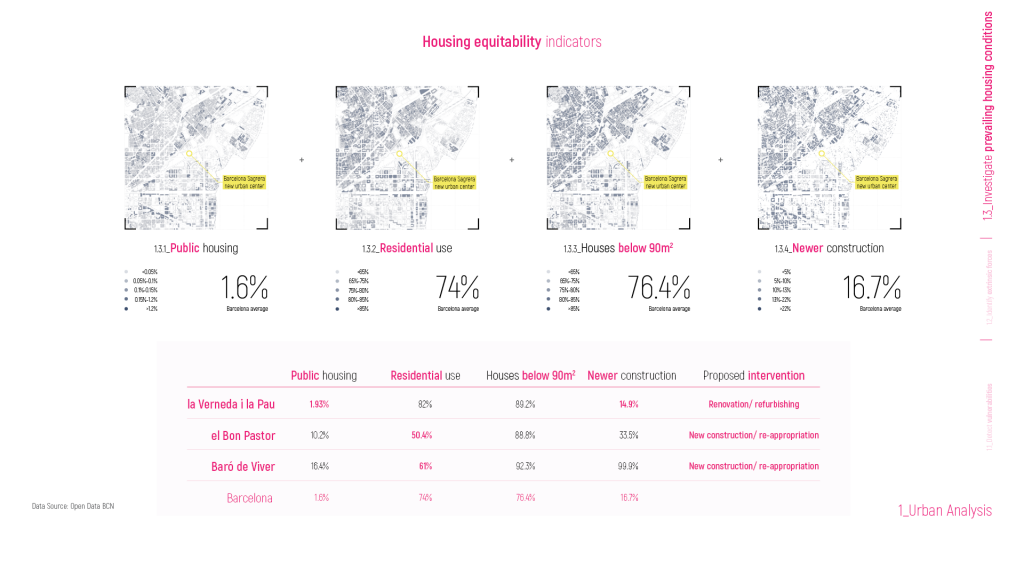
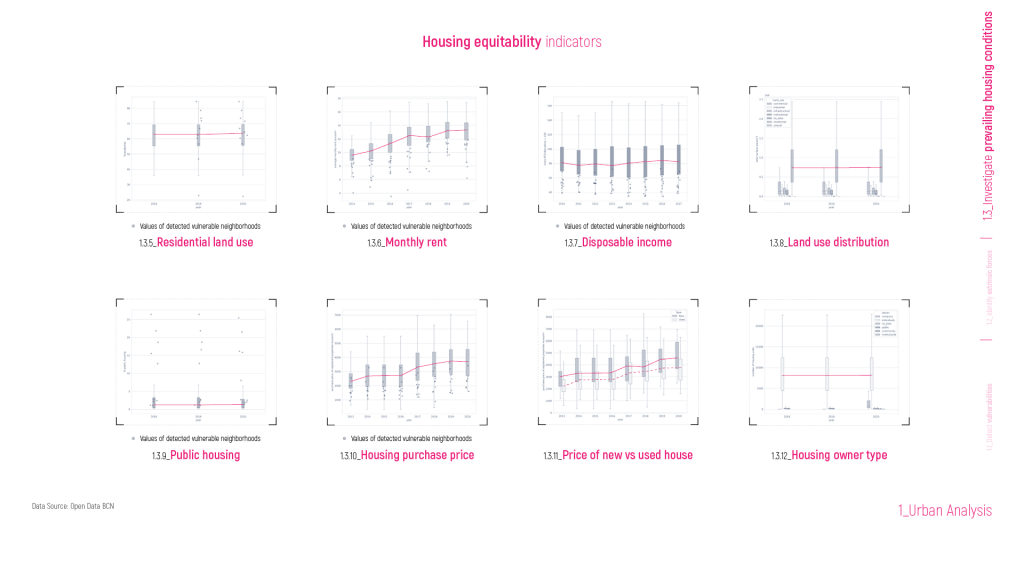
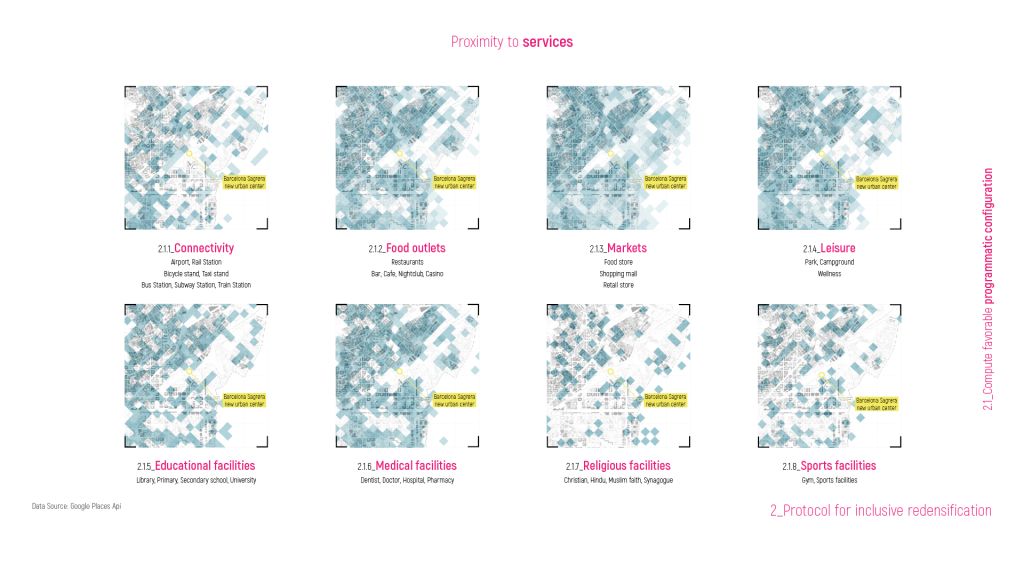
Inclu.city dashboard
The methodology is developed into a digital platform where city council can validate cases across the city. Using the analysed data of saturation we can determine the number of housing that can be added to the selected site. Analysing the proximity to the services allows us to compute the required programs.
</p>
To replicate the tool for other cities we can evaluate some of the global parameters and understand current densities and stages of urban development of different cities using data sources such as satellite imagery. As redensification cannot benefit in the same manner for cities at a different stage of development, we need to evaluate the urbanization patterns and growth of the cities in the past years.
Data such as building footprint and density might also not be available for other cities. In this case, the potential of Machine learning can be leveraged to extrapolate this information through aerial imagery.
</p>
Inclu.city is a project of IaaC, Institute for Advanced Architecture of Catalonia
developed at Master in City & Technology in (2019/2021) by:
Students: Kushal Saraiya
Faculties: Areti Markopoulou, Mathilde Marengo, Iacopo Neri